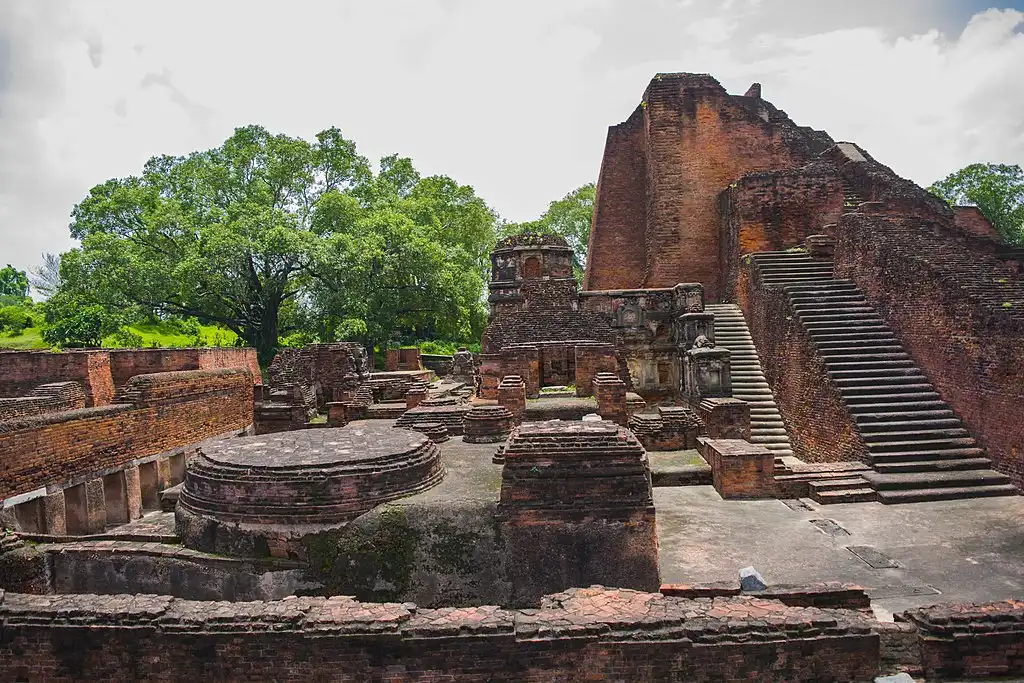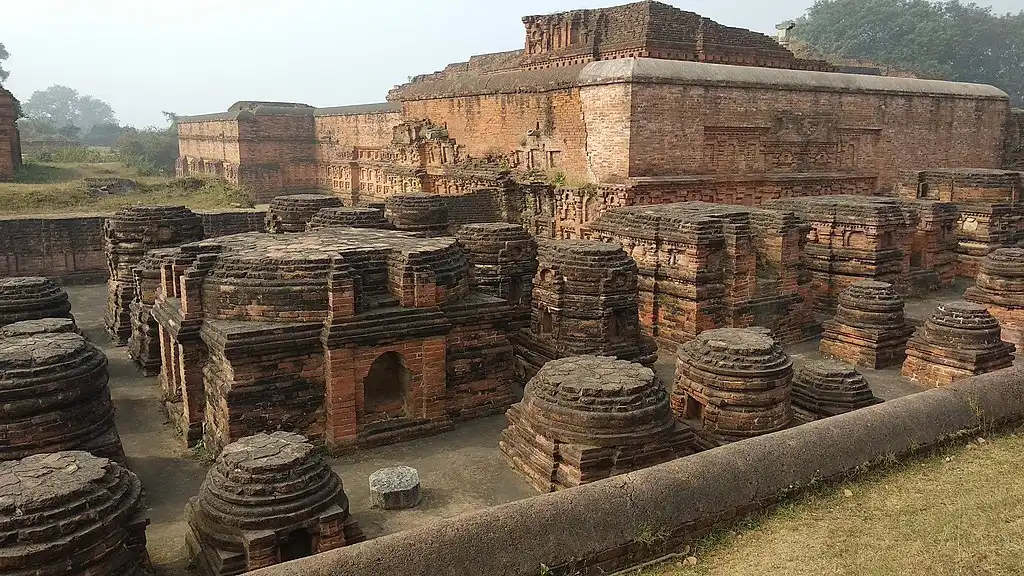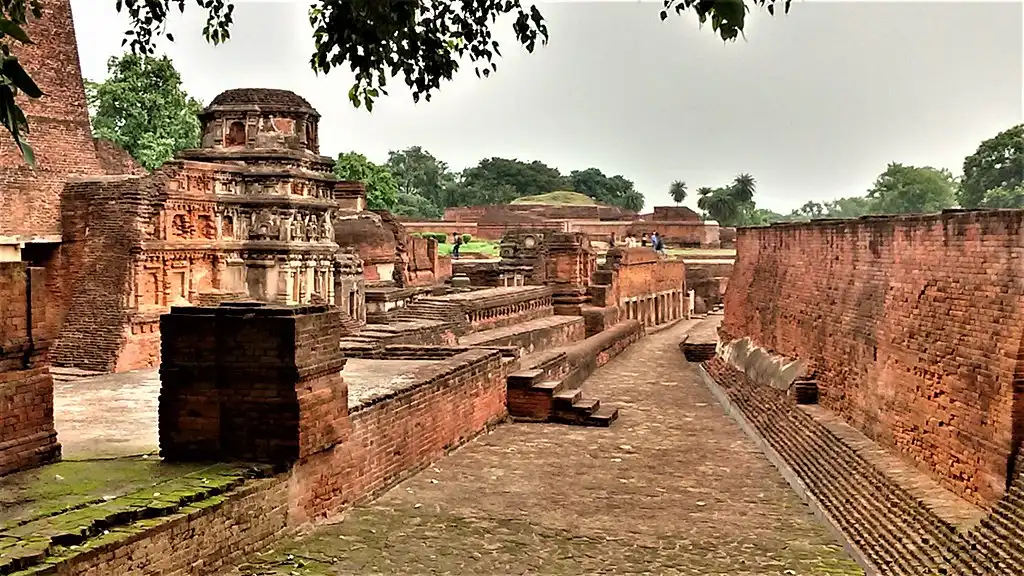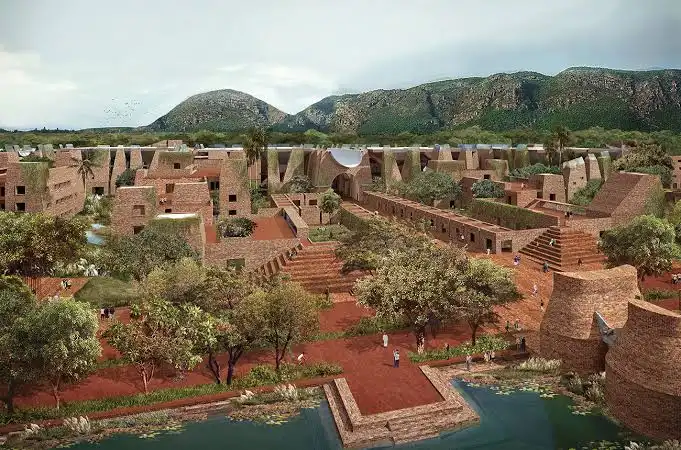20 amazing facts about Nalanda University reveal a rich history that intertwines education, cultural exchange, and diplomacy. The revival of Nalanda University marks a significant chapter in global education, celebrating the resurgence of a premier center of learning that once thrived in ancient India.
Established in the 5th century CE and flourishing for over seven centuries, Nalanda was renowned for its extensive curriculum and its role as a melting pot for scholars from across Asia. The university’s re-establishment in 2010 represents a profound commitment by India and its international partners to revive and build upon this historic institution.
This modern iteration of Nalanda is not just an academic venture; it also embodies a strategic effort in cultural diplomacy, aimed at strengthening global ties and fostering intercultural understanding through the preservation of shared heritage.
Dive into these 20 amazing facts to uncover the full scope of Nalanda’s historical significance and its continuing impact on the global educational landscape.
20 Amazing Facts about Nalanda University, Bihar
1. Nalanda University was Established in the 5th Century CE

Nalanda University, one of the world’s earliest and most prestigious centers of learning, was established in the 5th century CE during the Gupta Empire, a period often referred to as the “Golden Age” of India.
The Gupta rulers, known for their patronage of arts and education, laid the foundation for this university, which would go on to flourish for over 700 years.
Nalanda became a beacon of knowledge, attracting scholars from across Asia and serving as a vital hub for the study of Buddhism, philosophy, medicine, mathematics, and other disciplines. Its influence extended far beyond the borders of India, playing a crucial role in the cultural and intellectual exchanges between India and other civilizations, including China, Korea, Japan, and Southeast Asia.
The university’s long-standing success is a testament to the rich academic traditions and the vibrant scholarly environment nurtured during the Gupta period.
2. The University was Located in the Present-Day State of Bihar, India
Nalanda University was strategically located in the present-day state of Bihar, India, near the historic town of Rajgir. This location was significant for several reasons. Rajgir, known as Rajagriha in ancient times, was an important center of political, cultural, and religious activity in ancient India.
It was the capital of the Magadha Kingdom and a major site associated with the life of Gautama Buddha, making it a hub for Buddhist scholars and practitioners. The proximity to Rajgir allowed Nalanda University to flourish as a center of learning, attracting scholars and students from across Asia.
The region’s rich cultural heritage and its connection to Buddhism made it an ideal location for the university, which became renowned for its focus on Buddhist studies, philosophy, and other disciplines. The serene environment and the historical significance of the area contributed to the university’s reputation as a place of deep intellectual and spiritual pursuit.
3. The World’s First Residential University
Nalanda University holds the distinction of being the world’s first fully residential university, setting a precedent for academic institutions around the globe. Established in the 5th century CE, Nalanda was more than just a place of learning; it was a vibrant community where students and teachers lived, studied, and engaged in intellectual pursuits together.
The university housed thousands of residents, with scholars coming from various regions, including China, Korea, Japan, Tibet, and Southeast Asia. This residential model fostered a unique environment of continuous learning and cultural exchange, where ideas flowed freely across disciplines and borders.
The sense of community at Nalanda was integral to its success, as it allowed for deep, immersive study and the development of lasting scholarly relationships.
This pioneering approach to education not only enhanced the academic experience but also contributed to the university’s reputation as a global beacon of learning and wisdom.
4. A Renaissance of Knowledge
Nalanda University was a melting pot of intellectual pursuits, offering a remarkably diverse curriculum that attracted scholars from around the world. Far beyond its renowned Buddhist studies, Nalanda’s academic offerings spanned a wide array of subjects, including philosophy, medicine, mathematics, astronomy, and literature.
This breadth of study made Nalanda a true renaissance institution, where students could explore the mysteries of the cosmos, delve into the intricacies of human health, engage in philosophical debates, and immerse themselves in literary arts.
The university’s inclusive approach to education allowed for the cross-pollination of ideas between different fields of knowledge, fostering innovation and a deeper understanding of the world. By nurturing both spiritual and secular learning, Nalanda set a gold standard for holistic education, shaping the minds of generations and influencing intellectual traditions across Asia and beyond.
This diverse curriculum was a key factor in Nalanda’s enduring legacy as a global center of learning.
5. A Global Magnet for Scholars Across Asia
Nalanda University was not just an Indian institution; it was a global center of learning that attracted students from all corners of Asia. Scholars traveled great distances from countries like China, Korea, Japan, Tibet, Mongolia, Turkey, Sri Lanka, and Southeast Asia to study at this renowned university.
Nalanda’s reputation for academic excellence and its inclusive environment made it a beacon for those seeking knowledge and enlightenment. The presence of international students created a dynamic cultural and intellectual exchange, where diverse perspectives and ideas converged.
This global gathering of minds contributed to Nalanda’s vibrant academic community, enriching the learning experience for all. The university became a crucible where East met West, fostering not only the spread of Buddhist teachings but also the exchange of scientific, medical, and philosophical knowledge across cultures. Nalanda’s international appeal was a testament to its status as one of the most prestigious educational institutions of the ancient world.
6. Dharma Gunj: Nalanda’s Legendary Library, the Mountain of Truth
Nalanda University was home to one of the ancient world’s most remarkable libraries, the Dharma Gunj, also known as the “Mountain of Truth”.
This vast repository of knowledge housed hundreds of thousands of manuscripts, making it an unparalleled center for learning and research. The library was meticulously organized into three grand buildings: Ratnasagara, or “Ocean of Jewels,” Ratnadadhi, or “Sea of Jewels,” and Ratnaranjaka, or “Jewel-Adorned”.
Each building served a unique purpose, safeguarding precious texts on Buddhist scriptures, philosophy, medicine, astronomy, and more. Scholars from around the world came to Nalanda to study these manuscripts, which represented the accumulated wisdom of centuries.
The library was not just a collection of books; it was the heart of Nalanda’s intellectual life, where knowledge was revered, preserved, and shared.
Tragically, the Dharma Gunj was destroyed in the 12th century, but its legacy as a beacon of knowledge and enlightenment endures in history.
7. Nalanda’s Legacy: The Birthplace of Influential Scholars
Nalanda University was a crucible of intellectual brilliance, producing some of the most influential scholars in history. Among its illustrious alumni were Aryabhata, the pioneering mathematician and astronomer, and Xuanzang, the revered Chinese traveler and Buddhist monk.
Aryabhata, who is credited with formulating the concept of zero and making groundbreaking contributions to astronomy, laid the foundations for mathematical and scientific thought that would resonate across centuries.
Xuanzang, on the other hand, journeyed from China to Nalanda in his quest for authentic Buddhist teachings. He studied at the university for years, later translating sacred texts and sharing Nalanda’s wisdom with the world through his detailed travel accounts.
These scholars, and many others who walked Nalanda’s hallowed halls, carried forward the university’s legacy, spreading knowledge across Asia and beyond. Their work not only enriched their own fields but also helped establish Nalanda as a beacon of learning and intellectual achievement, whose influence endures to this day.
8. The Epicenter of Buddhist Wisdom and Global Influence
Nalanda University was not just an academic institution; it was the epicenter of Buddhist scholarship and spiritual learning. As a major center for Buddhist studies, Nalanda attracted monks, scholars, and students from all over Asia, eager to immerse themselves in its rich teachings.
The university’s curriculum included deep explorations of Buddhist philosophy, ethics, and meditation, making it a vital hub for the study and preservation of Buddhist texts. Nalanda’s influence extended far beyond its campus, playing a crucial role in the spread of Buddhism across Asia.
Scholars who trained at Nalanda carried the teachings of the Buddha to distant lands such as China, Korea, Japan, Tibet, and Southeast Asia, helping to establish Buddhism as a major world religion. The intellectual and spiritual legacy of Nalanda continues to resonate through the centuries, marking it as a pivotal institution in the history of Buddhism and global culture.
9. Nalanda’s Architectural Splendor: A Campus of Temples, Halls, and Harmony
Nalanda University’s architectural grandeur was a testament to its significance as a premier center of learning and spirituality. The sprawling campus featured a harmonious blend of temples, meditation halls, classrooms, and hostels, meticulously designed to support both intellectual and spiritual pursuits.
Majestic temples served as places of worship and reflection, while meditation halls provided serene spaces for contemplative practice. Classrooms and lecture halls, adorned with intricate designs and spacious layouts, facilitated the exchange of knowledge among students and scholars.
The residential quarters, or hostels, were designed to accommodate thousands of residents, fostering a vibrant academic community. The expansive layout of the university ensured that each element was integrated into a cohesive environment that nurtured learning and personal growth.
This architectural marvel not only supported the daily life of its inhabitants but also reflected the university’s esteemed status and its commitment to creating an enriching, serene, and inspiring space for all who entered its gates.
10. The Dynastic Support Behind Nalanda’s Flourishing Legacy

Nalanda University thrived under the generous patronage of several prominent dynasties, each contributing to its grandeur and success. The Gupta Empire, known for its promotion of arts and education, was instrumental in the university’s early development.
Their support laid the foundation for Nalanda’s growth into a major intellectual hub. Following the Guptas, the reign of King Harsha of the Kanauj dynasty further enhanced Nalanda’s prominence. Harsha’s patronage included grants of land and funds, which allowed the university to expand its facilities and attract scholars from across Asia. Later, the Pala Empire continued this tradition of support, with rulers like Dharmapala and Devapala making substantial donations that ensured the university’s continued excellence and influence.
This royal backing was crucial in maintaining Nalanda’s status as a beacon of learning, enabling it to flourish for over seven centuries. The unwavering support from these dynasties not only helped establish Nalanda as a prestigious institution but also cemented its legacy as a center of knowledge and culture.
11. Bakhtiyar Khilji’s Devastation and the Loss of a Scholarly Haven
In 1193, Nalanda University met a tragic end at the hands of Bakhtiyar Khilji, a Turko-Afghan military general of the Ghurid ruler Muhammad of Ghor whose conquest marked the university’s downfall. Khilji’s forces not only overran the ancient institution but also inflicted irreversible damage by setting fire to its legendary library.
The vast repository of knowledge, which housed hundreds of thousands of invaluable manuscripts, was consumed by flames, with the fire reportedly burning for months. This catastrophic destruction not only obliterated countless texts but also brought an abrupt end to Nalanda’s rich tradition of scholarship and intellectual exchange.
The loss of the library’s treasures was a profound blow to global knowledge and culture, erasing centuries of accumulated wisdom in a matter of days. Khilji’s invasion thus represents one of history’s great tragedies, marking the end of an era for one of the world’s most esteemed centers of learning and leaving a void that would take centuries to even begin to fill.
12. Inferno of Knowledge: The Library’s Manuscripts Burned for Months

The destruction of Nalanda University’s library was not merely an act of conquest; it was a cataclysmic event that left an indelible mark on the history of knowledge. When Bakhtiyar Khilji’s forces set fire to the library in 1193, the conflagration was so intense and extensive that it is said to have continued burning for several months.
The library, known as Dharma Gunj or the “Mountain of Truth”, housed an unparalleled collection of manuscripts, containing centuries of scholarly work in various fields such as Buddhist studies, astronomy, mathematics, and medicine. The sheer volume of texts fueled the fire, which consumed vast quantities of irreplaceable knowledge. The protracted blaze turned the library’s treasures into ash, erasing invaluable records of intellectual and cultural heritage.
This devastating loss was not only a tragedy for Nalanda but also a profound setback for the global repository of ancient wisdom, the effects of which were felt across cultures and generations.
13. Unearthing the Past: The Rediscovery and Excavation of Nalanda
In the 19th century, the ancient and revered site of Nalanda University was brought back into the limelight thanks to British archaeologist Alexander Cunningham. His rediscovery of the site, long buried beneath layers of history and neglect, marked a pivotal moment in the study of ancient Indian education.
Cunningham’s meticulous excavations uncovered the remnants of Nalanda’s grandeur, revealing a sprawling complex of ruins that once housed one of the world’s foremost centers of learning. The excavations brought to light the outlines of temples, meditation halls, classrooms, and the famed library, allowing scholars and historians to piece together the university’s architectural and academic legacy.
These findings not only rekindled interest in Nalanda’s rich history but also provided invaluable insights into its role as a beacon of knowledge in the ancient world. The ongoing efforts to study and preserve the ruins continue to highlight the significance of Nalanda as a symbol of intellectual achievement and cultural heritage.
14. UNESCO Designates Ancient Ruins as a World Heritage Site
In 2016, the ancient ruins of Nalanda Mahavihara were bestowed with a prestigious honor, as UNESCO designated them a World Heritage Site. This recognition was a testament to Nalanda’s profound historical and cultural significance, highlighting its role as a monumental center of learning in ancient India.
The designation underscored Nalanda’s influence as a beacon of knowledge, where scholars from across Asia once gathered to study a diverse array of subjects. The ruins, which include remnants of grand temples, meditation halls, and the famed library, serve as a powerful symbol of intellectual and spiritual pursuit.
By recognizing Nalanda as a World Heritage Site, UNESCO not only acknowledged its remarkable contribution to global history but also underscored the importance of preserving such sites for future generations.
This honor brings renewed global attention to Nalanda’s legacy, celebrating its role in shaping the intellectual and cultural landscape of the ancient world.
15. Reviving a Legacy: The Rebirth of Nalanda University

In 2010, the illustrious legacy of Nalanda University was rekindled with its re-establishment as a modern international institution of higher learning. This revival aimed to honor the historical significance of the original Nalanda by creating a new center of academic excellence. Supported by a consortium of countries, including India, China, Japan, and Singapore, the revitalized university seeks to bridge ancient wisdom with contemporary knowledge.
The modern Nalanda University offers a global platform for research and learning, focusing on areas such as Buddhist studies, philosophy, and international relations, while also fostering interdisciplinary approaches. Its international backing reflects a commitment to preserving and expanding Nalanda’s rich intellectual heritage, ensuring that the spirit of one of history’s greatest centers of learning continues to inspire and educate.
This revival not only pays homage to Nalanda’s storied past but also positions it as a forward-looking institution, dedicated to fostering global scholarship and collaboration.
16. A Modern Campus in the Heart of History
The contemporary revival of Nalanda University has found its home in Rajgir, near the site of the ancient institution, seamlessly blending history with modernity. The new campus is designed to reflect Nalanda’s prestigious past while catering to current educational needs. Offering a range of postgraduate and doctoral programs, the university serves as a center for advanced learning and research.
The location, close to the original Nalanda site, enriches the academic experience with its deep historical and cultural context. The campus boasts state-of-the-art facilities, fostering an environment where students and researchers can engage in cutting-edge studies while drawing inspiration from the rich legacy of their predecessors.
This strategic location not only underscores the continuity of Nalanda’s academic tradition but also enhances its global appeal as a hub for scholarly excellence and innovation.
17. Nalanda’s Interdisciplinary Approach to Learning
Nalanda University’s contemporary revival embraces a forward-thinking, interdisciplinary approach to education, reflecting its ancient legacy while addressing the complexities of today’s world. The university is structured around specialized schools that foster collaboration across diverse fields.
The School of Historical Studies delves into the rich tapestry of past civilizations, while the School of Ecology and Environment tackles pressing global environmental challenges. Complementing these is the School of Buddhist Studies, Philosophy, and Comparative Religions, which builds on Nalanda’s historical expertise in spiritual and philosophical inquiry.
This interdisciplinary focus encourages students and researchers to bridge gaps between disciplines, fostering a holistic understanding of complex issues.
By integrating historical insights with modern scientific knowledge and philosophical exploration, Nalanda University aims to cultivate a new generation of scholars capable of addressing both ancient wisdom and contemporary challenges.
This approach not only honors Nalanda’s storied past but also ensures its relevance in shaping future intellectual landscapes.
18. Green Renaissance: Nalanda University’s Commitment to Environmental Sustainability
The new campus of Nalanda University is a beacon of modern environmental consciousness, embodying a strong commitment to sustainability. Designed with a focus on eco-friendly practices, the campus features energy-efficient buildings that minimize energy consumption and reduce carbon footprints. Solar panels, rainwater harvesting systems, and sustainable construction materials are integral components of this green initiative.
The campus also boasts extensive green spaces, including lush gardens and tranquil landscapes, which not only enhance the aesthetic appeal but also promote biodiversity and well-being. By integrating these sustainable practices, Nalanda University aims to set a benchmark for environmentally responsible development in higher education.
This focus on sustainability reflects the university’s dedication to creating a learning environment that honors both its historical heritage and its responsibility to future generations. Through these efforts, Nalanda is fostering a culture of environmental stewardship, ensuring that its academic and ecological impact harmoniously supports a sustainable future.
19. A Beacon of Knowledge and Tolerance
Nalanda University stands as a timeless symbol of the values that shaped ancient India—knowledge, cultural exchange, and religious tolerance. As one of the world’s earliest centers of higher learning, Nalanda was a crucible where scholars from diverse backgrounds and regions converged to share wisdom and engage in intellectual discourse.
The university’s curriculum encompassed a wide array of subjects, reflecting a deep commitment to broadening the scope of human understanding. Its inclusive environment encouraged the free exchange of ideas across different cultures and traditions, fostering an atmosphere of mutual respect and collaboration.
Nalanda’s embrace of various religious and philosophical perspectives, including Buddhism, Hinduism, and Jainism, exemplified its dedication to religious tolerance and intellectual diversity. This rich legacy of openness and scholarly pursuit continues to inspire contemporary values of cross-cultural dialogue and mutual understanding, reinforcing Nalanda’s enduring role as a global icon of enlightenment and inclusivity.
20. Reviving Nalanda: India’s Cultural Diplomacy Through Heritage and Education
The revival of Nalanda University is a powerful testament to India’s dedication to cultural diplomacy and international cooperation. By re-establishing this historic institution, India not only honors its rich academic heritage but also strengthens ties with countries that share its historical and cultural legacy. The modern Nalanda University serves as a bridge connecting diverse cultures through its interdisciplinary programs and global outreach, reflecting India’s commitment to fostering mutual understanding and collaboration.
The involvement of countries such as China, Japan, and Singapore in the university’s revival underscores a shared respect for Nalanda’s ancient tradition of scholarship and intercultural dialogue. This initiative highlights India’s strategic role in promoting global cultural exchange, demonstrating that the revival of Nalanda is not merely an academic endeavor but also a symbol of India’s active engagement in preserving and celebrating its historical ties with the wider world.
Through this revival, Nalanda stands as a beacon of cultural diplomacy, reinforcing the importance of heritage and education in forging international relationships.
You may also like:
- Chanakya’s Saptanga Theory: An Insight Into The Classic Theory
- 20 Proud Facts About India
- 20 Incredible Facts About Indian History
Conclusion
The resurgence of Nalanda University is a testament to India’s profound commitment to preserving its historical legacy while embracing its role in global cultural diplomacy.
By seamlessly integrating the wisdom of its ancient past with contemporary educational practices, Nalanda University stands as a beacon of knowledge and tolerance in today’s world. The emphasis on interdisciplinary studies, environmental sustainability, and international collaboration showcases the university’s dedication to fostering intellectual and cultural growth.
As we explore these 20 amazing facts about Nalanda University, it becomes clear that its revival not only restores a revered institution to its former glory but also strengthens global connections. Nalanda’s enduring legacy demonstrates how the preservation of heritage and the advancement of education can bridge divides, promote mutual understanding, and contribute to a shared vision for a more interconnected future.



